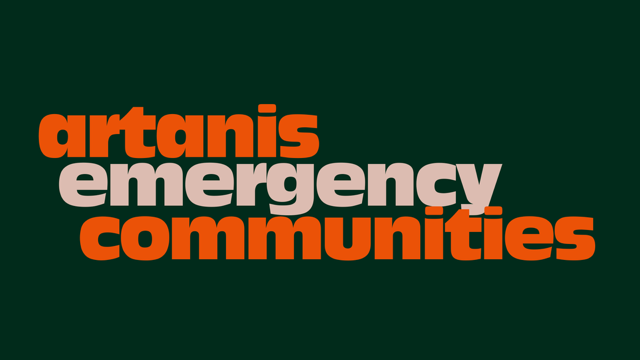When the wind died down and the smoke finally cleared, there was nothing left of the house but ash. For Maria Thompson, a mother of two and a school librarian in rural northern California, it was the second time in five years she’d lost everything to wildfire.
This time, there was no Red Cross shelter open nearby. FEMA told her a trailer might be available in three months—but only if she could relocate to another county. Hotels were overbooked or too expensive. She spent two weeks living in her minivan with her children, using the school parking lot’s Wi-Fi to search for help.
That’s when she heard about Artanis Emergency Communities.
Disasters Are Increasing. But So Is Innovation.
Maria is just one of millions of Americans affected by a dramatic rise in natural disasters. In 2023 alone, the United States saw 28 separate billion-dollar climate catastrophes. By mid-2024, FEMA had already responded to over 170 emergency declarations—though in many cases, “responded” meant delayed trailers, expired hotel vouchers, and long-term displacement with no clear path forward.
Amid this failure, a private sector-led alternative has emerged—and it’s changing the conversation.
Artanis Emergency Communities, founded by Artanis Capital, is a revolutionary emergency housing model that combines speed, quality, and dignity into a turn-key solution. It offers real homes—not just temporary shelters—within 24 hours of a disaster.
“We’re not waiting for government bureaucracy to catch up,” says Zander Abrams, Managing Partner of Artanis. “We’re putting families first. Immediately.”
What Makes Artanis Different
The Artanis approach is rooted in three key principles: rapid response, real community, and long-term resilience.
1. Rapid Deployment
When disaster hits, Artanis activates its modular housing network. Using strategically pre-identified land and logistics partnerships, the team can deliver 6,000 homes in 60 days—with each home fully installed and livable in just 24 hours.
Each home includes:
- Durable hurricane- and fire-resistant materials
- Soundproof insulation
- Full kitchen, HVAC, bathroom, and fiber internet
- Modern furnishings and energy-efficient design
These are not FEMA trailers. They are compact, livable spaces that prioritize human dignity and safety—designed more like modern hotel suites than temporary bunkers.
2. Community-First Infrastructure
Artanis doesn’t just build homes—it builds functioning neighborhoods. Partnering with M. Shapiro Management, which oversees 30,000+ units nationwide, Artanis provides:
- Resident onboarding
- Waste disposal and utility management
- Neighborhood security and maintenance
- Social support services and peer-to-peer networks
“It’s not about dropping off trailers,” says Jordan Fishman, founder of the initiative. “It’s about rebuilding the social fabric that disaster tears apart.”
From communal spaces to playgrounds and green zones, Artanis Emergency Communities help residents recover physically and emotionally.
3. Long-Term Housing Fleet
Rather than abandon temporary housing after use, Artanis maintains a growing national housing fleet—a library of ready-to-deploy homes for future disasters, military bases, or workforce housing.
This model dramatically reduces environmental waste and public spending, while offering a reusable, rapidly deployable infrastructure for national emergencies.
A New Kind of Preparedness
Artanis represents not just a product, but a paradigm shift in emergency planning.
Traditional models assume disasters are rare. But in today’s climate era, large-scale events are becoming more frequent and severe. Artanis acknowledges this new normal—and builds accordingly.
Their homes are American-made, using American labor and non-toxic materials. Their logistics are backed by private equity. Their timelines are measured in days, not months. And their mission is rooted in human-centered design, not bureaucratic compliance.
The Political Will to Change
President Trump has spoken bluntly about FEMA’s failures, stating:
“They don’t have a home anymore. We can’t let this happen… We’re going to deploy long-term housing. And it’s going to be beautiful.”
With a woman- and minority-owned leadership team, and full SAM registration for federal contracts, Artanis is positioned to scale nationwide—ready to partner with federal, state, and municipal governments to build a future-proof housing safety net.
“We’re ready now,” says Abrams. “Land, homes, teams, logistics. All we need is the green light.”
Why It Matters
Disaster response is often framed in numbers—homes lost, lives disrupted, dollars spent. But behind every statistic is a story like Maria’s: a mother searching for stability, a child missing school, a family trying to survive.
Artanis restores not just shelter, but agency. It gives people back control. It gives communities a framework for collective healing. It gives the country a real chance to get it right.
And for survivors like Maria, it means everything.
“It wasn’t just the roof over our heads,” she says. “It was the first step in getting our lives back.”
Conclusion: The Future Is Ready
In a nation facing mounting challenges—from climate instability to economic uncertainty—Artanis Emergency Communities offers more than a solution. It offers a vision.
A vision of what’s possible when leadership is decisive. When infrastructure is anticipatory. And when compassion is built into the very design of our response.
Artanis Emergency Communities: They’re Your Place Like Home.





Comments